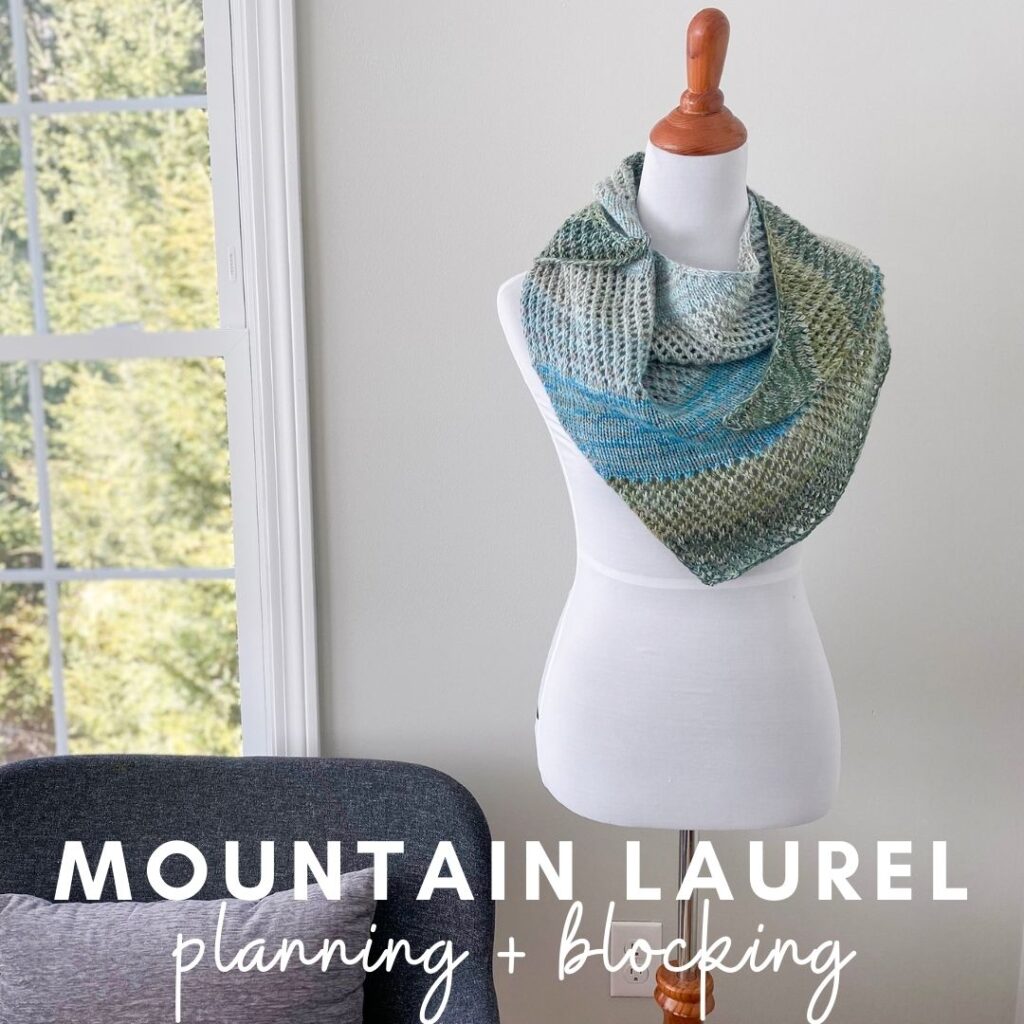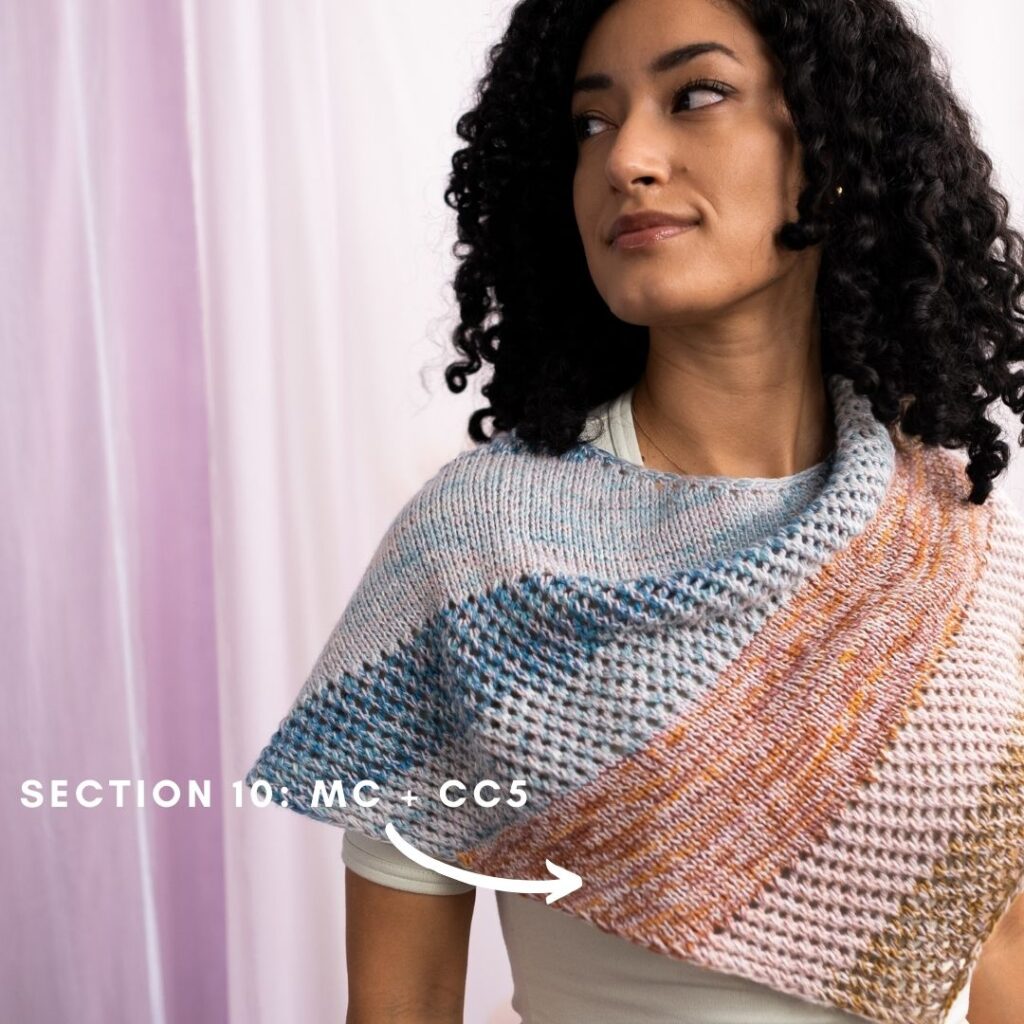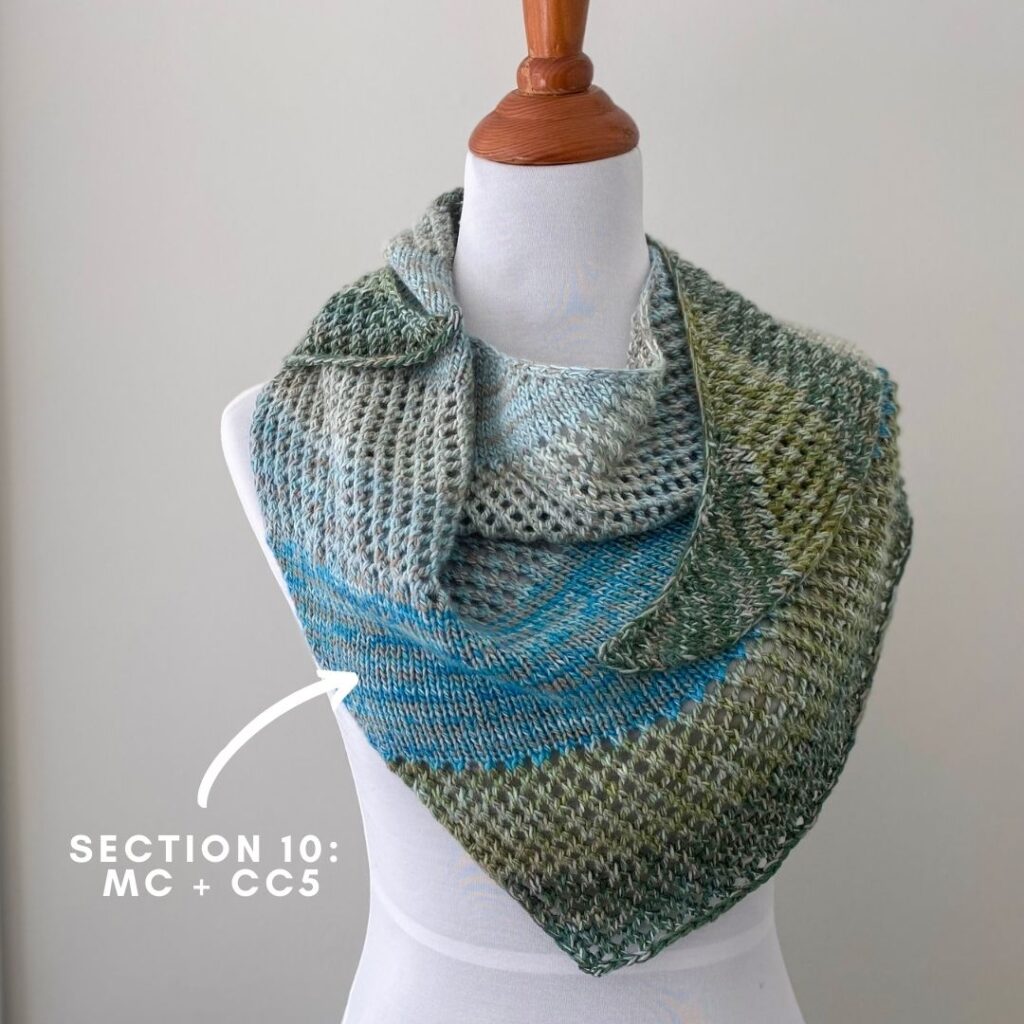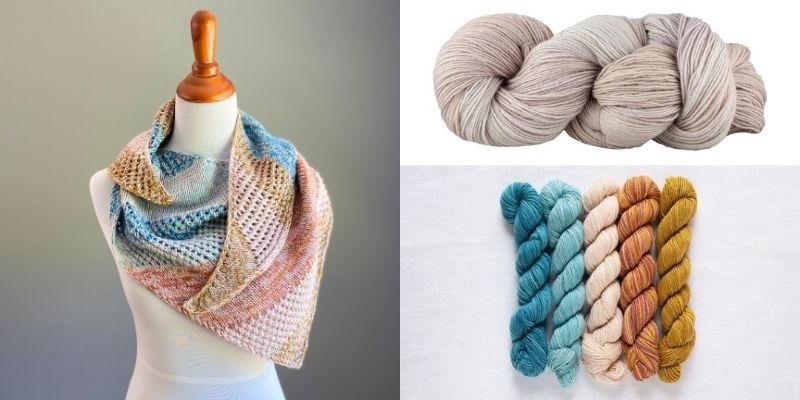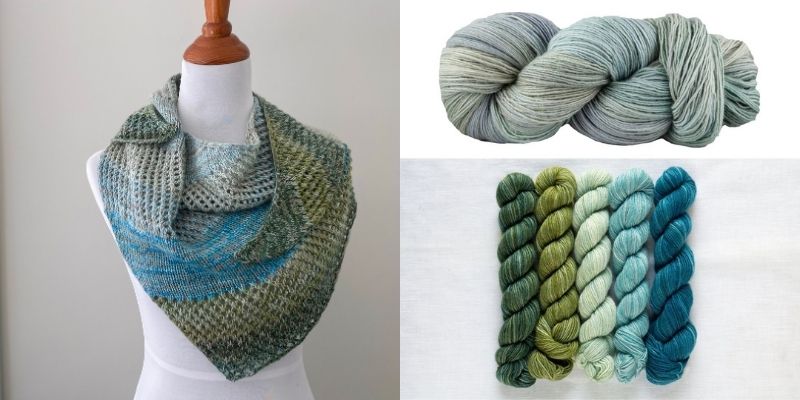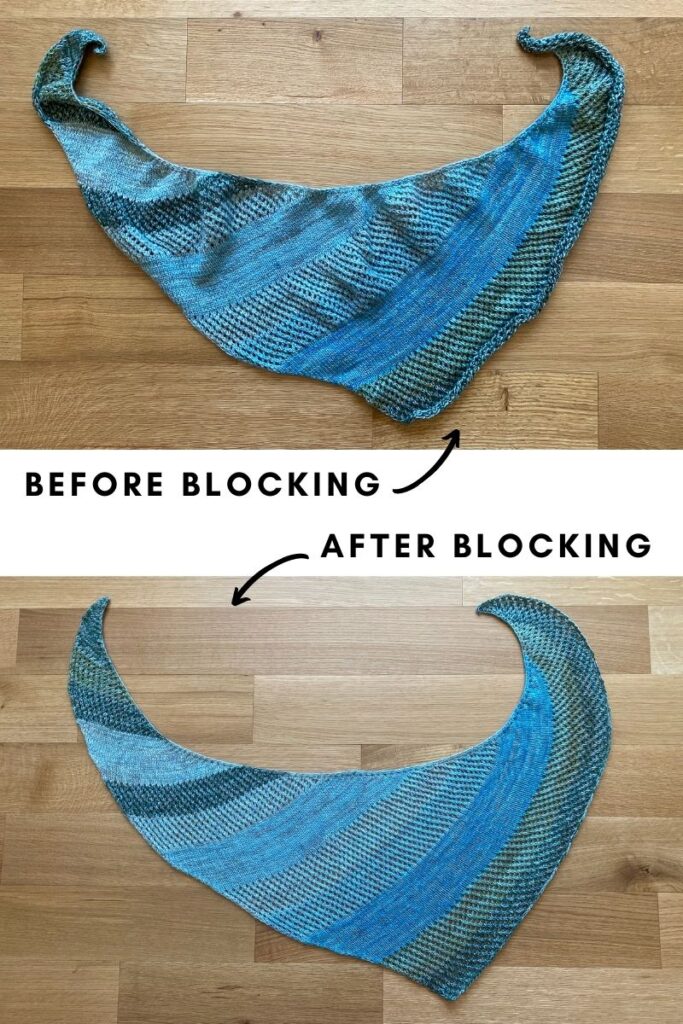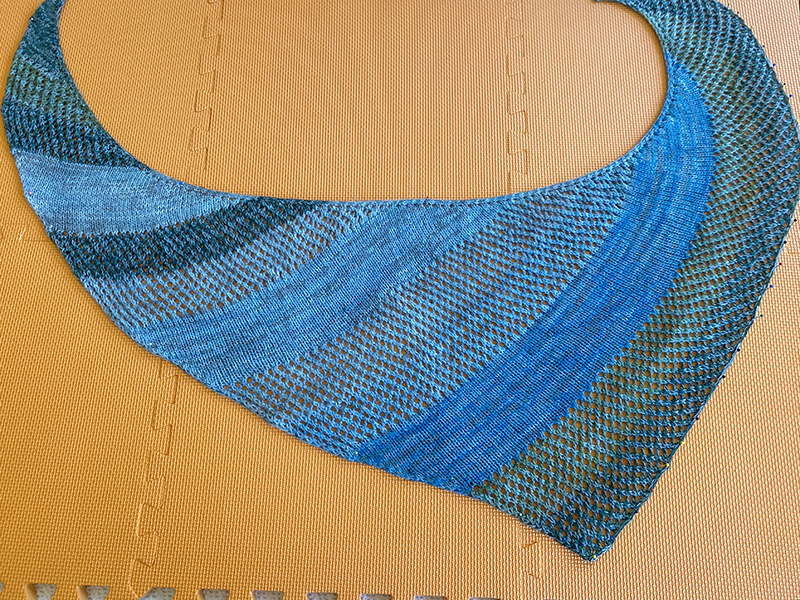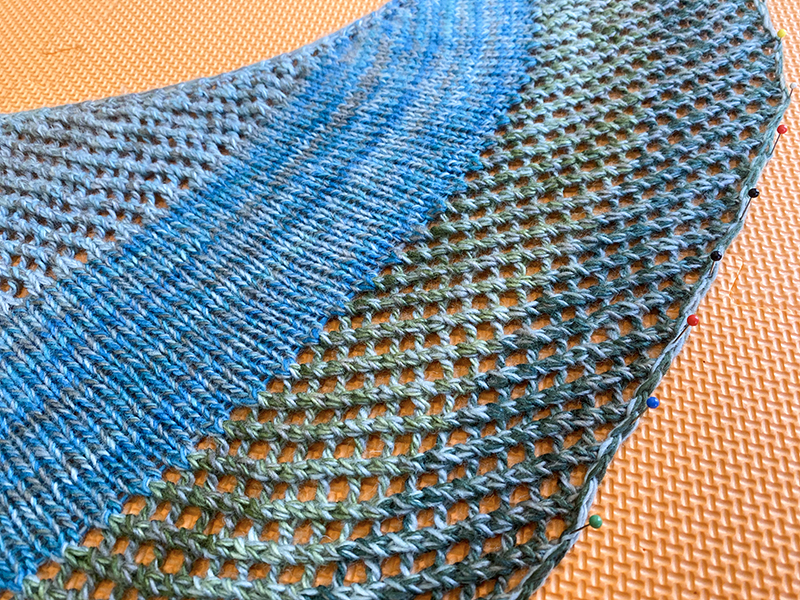One of the patterns featured in my Spring collection with Manos del Uruguay yarns is Mountain Laurel – a double-stranded, asymmetrical scarf/shawlette. I thought it might be helpful to talk about the color planning for this piece as well as some blocking tips!
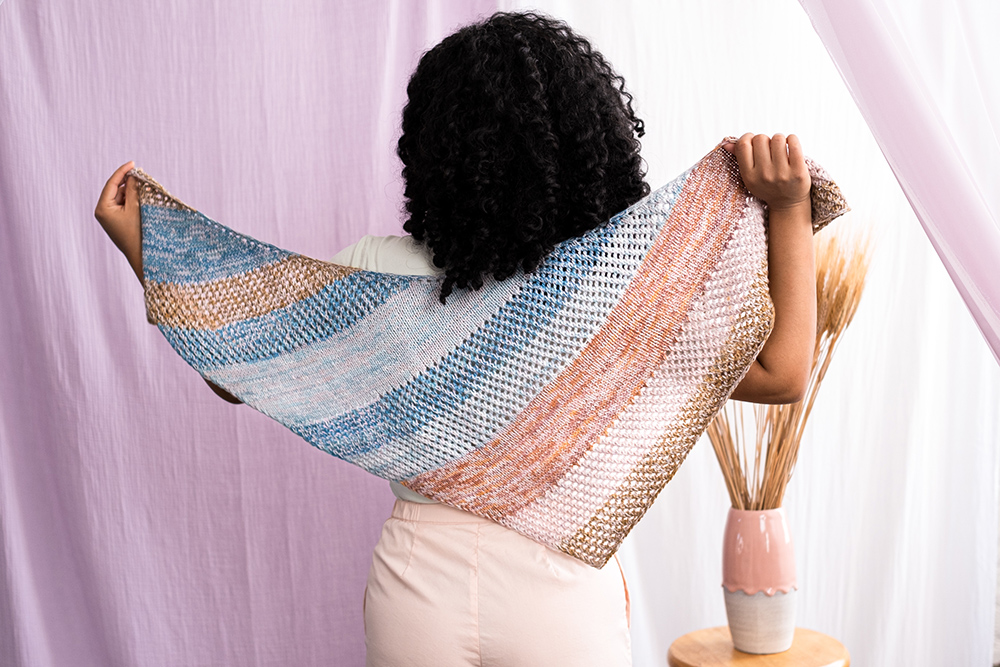
Yarn + Color Plotting:
The yarn featured in this piece is Manos del Uruguay’s Fino yarn. It’s sold as either a full 100g skein or as a package of 5 mini skeins (each 20g). In this piece I combine both a full skein with the mini skeins – it’s such a fun way to play around with mini skeins and color options! The full skein is considered the main color (MC) and each of the 5 mini skeins are the contrasting colors (CC1 through CC5) and throughout the piece you are knitting with both a strand of the MC and a strand of one of the CC’s (so you are double-stranding throughout). This creates the cool marled affect in the colors! And there are just 2 stitch patterns involved in this piece – plain stockinette stitch or an eyelet mesh.
There are 12 sections in the pattern and in each section you are working the MC with a different CC. For color planning purposes, here’s a diagram that shows how it’s all plotted out:
One thing I’ll highlight is that if you wear the scarf like a kerchief (like how it’s styled below), section 10 is the one that lays right across your Front – this is the section with MC + CC5. So when planning the order of your contrasting colors, keep in mind whichever one you choose as #5 is the one that will fall in this prominent position:
Color Combos:
The original Mountain Laurel uses Whalebone as the full skein (main color) and Phoebe as the mini skein set (with colors in this order: CC1 = gold, CC2 = pale pink, CC3 = dark blue, CC4 = light blue, CC5 = burnt orange):
This alternative version (that my friend Suzie just knit for me) uses Tea Leave as the full skein (main color) and Flora as the mini skein set (with colors in this order: CC1 = dark green, CC2 = medium green, CC3 = light green, CC4 = light blue, CC5 = bright blue):
In both cases, the full skein for the main color is relatively neutral and is complementary to each of the mini skein colors. When in doubt, pick a neutral for your full skein – but feel free to go more bold too if you’re so inclined! The fun thing with double-stranding yarns like this is that you never know for sure how yarn colors will play with each other – there’s an element of mystery involved and that’s half the fun 🙂
Blocking:
I wanted to talk about blocking with this piece because it is such an important part of creating the final look. How important? Let me show you the before-blocking and after-blocking photos of this scarf:
Wow, right!? Blocking will relax all of the stitches and the edges and give is such a nice, finished look. I recommend wet-blocking as that will provide the most “relaxing” of the stitches as possible. If you have never wet blocked before, check out my video tutorial here (I’m blocking a sweater in this lesson but the techniques are the same). After I have soaked the piece in wool wash for about 15 minutes and have rolled it in towels to get the big wet out, I place it on my blocking tiles to shape and then I pin down the edges – I pinned every 1-2″ along the bind-off edge (that’s the edge on the right end) and then just sporadically on the other edges:
If after a couple of wears the edges start to roll a little, feel free to steam them as needed. I haven’t needed to do that yet but it’s an option should it happen to you.
If you are wondering where you can purchase the Manos del Uruguay Fino yarn for this project, check with your local yarn shop! If they don’t carry it, here are a few other places you can find online that, at least at the time of writing this post, carried all of the colors I featured above:
- Wool & Co: Fino full skeins and Fino mini skein packs.
- Webs (yarn.com): Fino full skeins and Fino mini skein packs.
- Ball & Skein & More: Fino full skeins and mini skein packs.
- Eat Sleep Knit: Fino full skeins and Fino mini skein packs.
I hope this information about planning and finishing Mountain Laurel has been helpful! If you have any follow-up questions, feel free to reach out. Pattern is available on Ravelry or on the Fairmount Fibers website.


